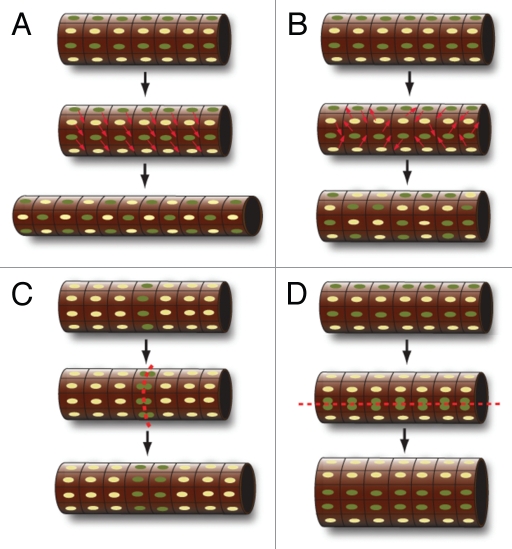Figure 3.
Overview of convergent extension movements (A and B) and oriented cell division (C and D) in epithelial tubules. (A) During convergent extension movements, the cells intercalate medio-laterally or perpendicular to the proximo-distal axis of an epithelial tubule in the wild type. (B) In the absence of Wnt9b in kidney epithelial tubules, this movement is completely randomized, resulting in increased tubule diameter. (C) Oriented cell division in wild-type tubules causes the mitotic spindle to be within the plane (or parallel to the proximo-distal axis) of the epithelium, resulting in elongation without affecting the diameter. (D) In mutants with defects in oriented cell division, the plane of the mitotic spindle is randomized relative to the axis. In the absence of compensating forces, such as convergent extension, this will result in increased tubule diameter.

